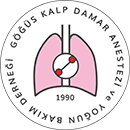

Is the Intraoperative Lactatestandard Base Excess Relationship Strong in Cardiac Surgery?
Serap Aktaş Yıldırım1, Melis Tosun Canlı2, Bülent Güçyetmez1, Fevzi Toraman11Department of Anesthesiology and Reanimation, Acıbadem Mehmet Ali Aydınlar University Faculty of Medicine, İstanbul, Türkiye2Department of Anesthesiology and Reanimation, Acıbadem Bakırköy Hospital, İstanbul, Türkiye
Objectives: In this study, changes in lactate and standard base excess (SBE) values, which are indirect indicators of tissue perfusion, in patients undergoing cardiac surgery with cardiopulmonary bypass (CPB) were examined, and whether there was a correlation between them was investigated.
Methods: In total, 2,068 patients >18 years of age who underwent elective cardiac surgery with CPB were included in the study. Hemodynamic and blood gas parameters were recorded at four different time points: before and after anesthesia induction and at the beginning and end-of-extracorporeal circulation.
Results: Before anesthesia induction, the average lactate level was 1.0±0.5 mmol/L, and the average SBE level was 0.9±2.1. SBE and lactate had very weak correlations in all four intraoperative periods (r2=0.01, r2=0.02, r2=0.06, r2=0.06; p<0.001). At the end of the extracorporeal period, SBE and lactate were correlated (r2=0.11; p<0.001) in patients with lactate values >2 mmol/L, but no correlation was found in patients with a lactate value <2 mmol/L (r2=0.0003; p=0.526). The Kappa test revealed that lactate and SBE changes were incompatible in 274 (13.3%) patients. Hyperchloremia was detected in 1683 (94.5%) of 1781 patients in whom lactate increase and simultaneous SBE decrease were observed.
Conclusion: Lactate levels were weakly correlated with SBE throughout the intraoperative period. Because SBE is a calculated parameter and not a measured parameter, it should be evaluated together with lactate rather than interpreted alone.
Keywords: Cardiopulmonary bypass, lactate, standard base excess, tissue perfusion
Manuscript Language: English
(509 downloaded)

















